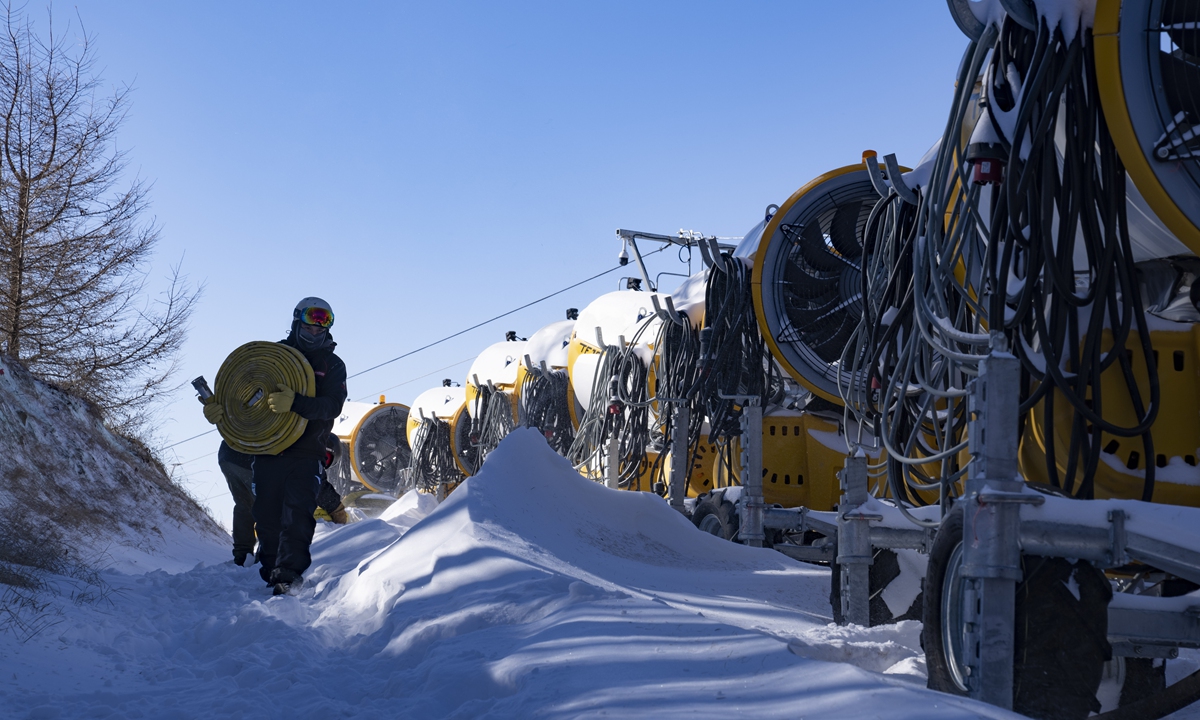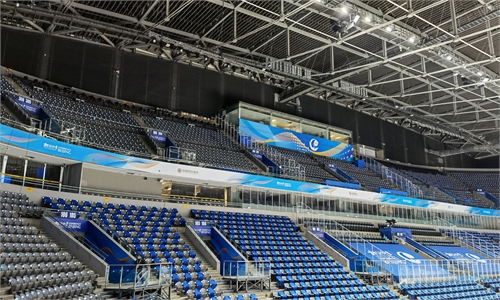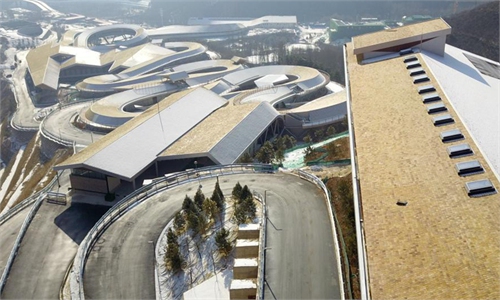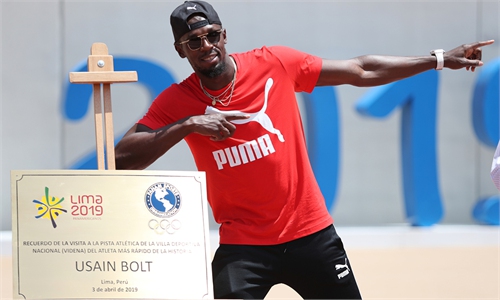Beijing begins to create ‘icy snow’ for Winter Olympics, poses no threat to environment or water use

Staff at the National Alpine Ski Center in the Yanqing competition area, Beijing begin to create artificial snow for the upcoming Beijing 2022 Winter Olympics on November 15, 2021. Photo: Courtesy of Beijing major project management office
The National Alpine Ski Center in the Yanqing competition area, one of the three venues for the Beijing 2022 Winter Olympics, began to create artificial snow for the upcoming Games on Monday, and it is expected to complete the task in mid-January. The Games have strict requirements for the size, thickness, hardness and density of snow particles for competition, which cannot be achieved by natural snowfall.
The Global Times learned from the Beijing major project management office on Monday that the meteorological conditions in Beijing's suburban Yanqing district have met the requirements for snowmaking.
Alpine skiing is known as the "pearl in the crown of the Winter Olympic Games." The center, which was completed in June, has held several test competitions and is qualified to hold the actual competition. It has seven courses, which together will be used for 11 events such as downhill, Super G and giant slalom, producing a total of 11 gold medals.
The tracks are 9.2 kilometers long with a maximum vertical drop of 900 meters. It is the first alpine skiing course in China that meets the Olympic standards, and one of the most difficult venues in the world.
Wu Gaosheng, operation manager of the center, told the Global Times on Monday that the snowmaking team consists of 20 Chinese and foreign personnel, and it works 24 hours a day in two shifts.
"About 170 sets of snowmaking equipment have been put into use. The project covers about 800,000 square meters and the team will need to produce about 1.2 million cubic meters of snow," Wu said. "In order to ensure that competitors can reach a top speed of 130-140 kilometers/hour, the International Snow Federation has strict requirements on the hardness of the slopes, so snowmaking is the most critical part."
The requirements mean that the surface of the trail must remain crystalline, almost like ice, and this snow is called glacial snow.
"Icy snow could reduce friction between skis and trails, making them less likely to break. When it comes to high-speed turns, it can also ensure that the ski surface is smooth, and that the ski track is in a perfect state regardless of the number of runners, so as to ensure the fairness of the competition," Wu said.
Although Beijing may see its heaviest snowfalls ever this winter, the Beijing 2022 Winter Olympics will still use a large amount of artificial snow, because artificial snow is more in line with the requirements of the competition and safer for athletes.
Some Western media, including the Guardian, expressed concern about the environmental cost of fake snow for the Games, saying that Beijing will need about 49 million gallons of water to create the required volume of artificial snow for the Winter Olympic Games.
Zhang Li, a member of the Beijing Winter Olympics bid delegation, pointed out in a previous interview that the artificial snowmaking technology used for the Games will not pollute the environment.
"We will use a form of spray, based on water molecules, which itself is not polluting to the environment," Zhang said, adding that "the amount of water used for artificial snowmaking in places such as Zhangjiakou, Hebei Province, which accounts for less than 1 percent of the local water supply at the most, poses no threat to the water use of residents in the region."





